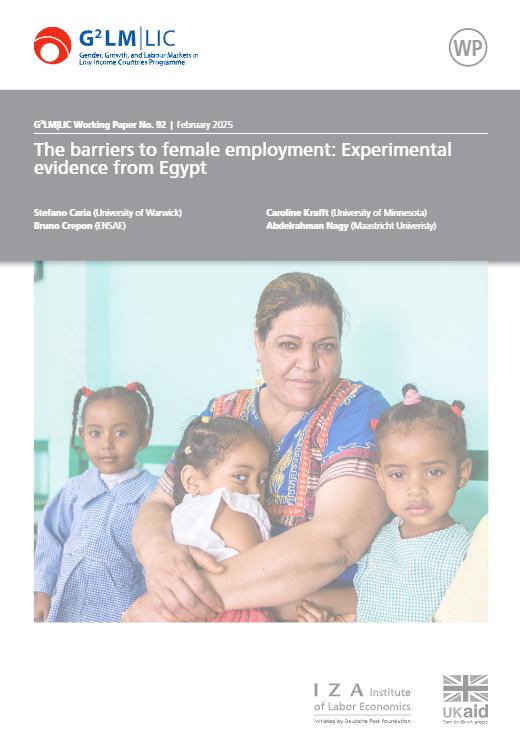Can making jobs easier to find and keep raise female employment in societies where gender norms discourage women from working? We report the results of an experiment in Egypt — a country where social norms limiting female employment are widely held, but many women nevertheless look for work and identify lack of childcare as the key barrier to employment — designed to help women with young children obtain employment. The study cross-randomized job matching (making jobs easier to find) and child care subsidies (making jobs easier to keep). Take-up of the child care subsidies was low, and while nearly half of the women who were offered the opportunity signed up for the job-matching services, only some applied to jobs and very few obtained jobs through the services. Neither intervention led to appreciable changes in women’s employment or the use of child care. We present evidence that a mismatch between desired non-pecuniary job attributes and the attributes of available jobs limited the impacts of the interventions. While this may be partly due to gender norms, we also document a mismatch between desired and existing job attributes for couples who do not report restrictive norms. Overall, our results demonstrate the limits of female employment interventions that do not address — by either tackling norms or strengthening job amenities — the mismatch between desired and available non-pecuniary job attributes.
